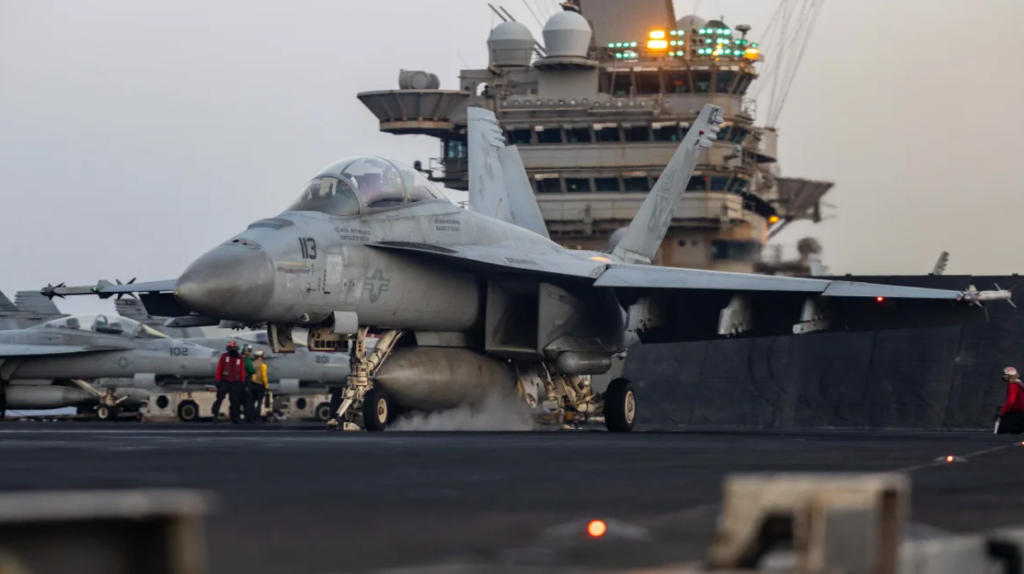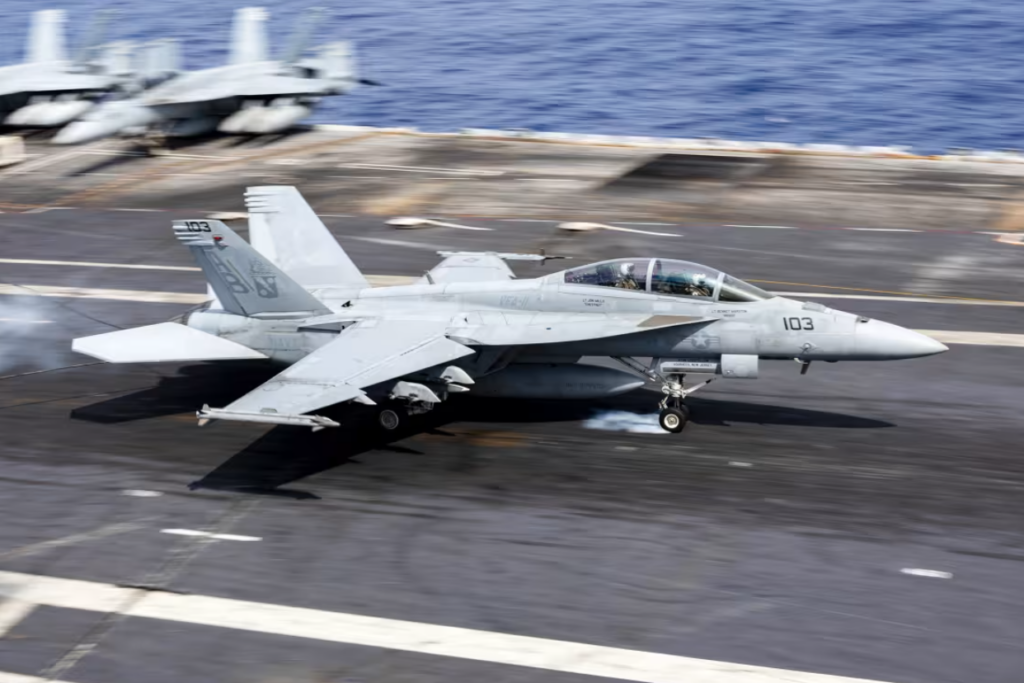Second US F/A-18F Super Hornet Crashes Into Red Sea After Failed Carrier Landing
On May 6, another U.S. Navy F/A-18F Super Hornet plunged into the Red Sea, following a failure of its arresting hook system while attempting an onboard landing on the aircraft carrier USS Harry S. Truman. The crash happened during routine air operations and was confirmed by U.S. defense officials, making it another high-profile U.S. Navy fighter jet accident in recent weeks.
The twin-seat fighter jet from Strike Fighter Squadron 11 was trying to land on the flight deck of the Truman when its arresting hook system did not work properly, and it overshot and fell into the water. The carrier was carrying out operations in the Red Sea against the Houthi.

Both crew members, the pilot and the weapons systems officer, ejected safely and were rescued by a helicopter. They were treated on board the USS Truman and only sustained minor injuries, the Navy said. No one on the ship’s flight deck was hurt in the incident. Each F/A-18F Super Hornet is very expensive at approximately $67 million per airframe, and the loss is now under investigation. The Navy and U.S. Central Command have launched an inquiry to determine what caused the landing mishap. Officials noted that it is not yet clear whether a mechanical problem, a pilot issue, or some other factor led to the arresting gear failure. As of now, no definitive cause has been announced.
This incident was the second F/A-18 loss from the USS Harry S. Truman within 10 days, and the third on this deployment. Earlier in the week, another Super Hornet went overboard under similar circumstances, that crew also escaped unharmed. Despite these crashes, US Navy officials stress that the Truman strike group remains fully mission-capable. There no scheduled return date for the carrier and the vessel continues its deployment while investigations are ongoing. On Tuesday, President Trump announced that the Houthis had agreed in principle to desist from attacks on vessels in the Red Sea, allowing the US to pause operations against the Houthi. Oman subsequently confirmed that both sides had agreed on a ceasefire.

